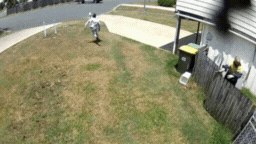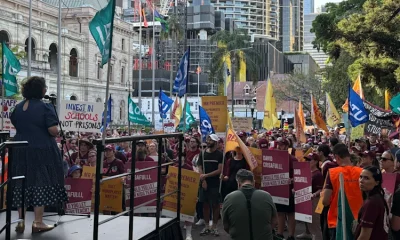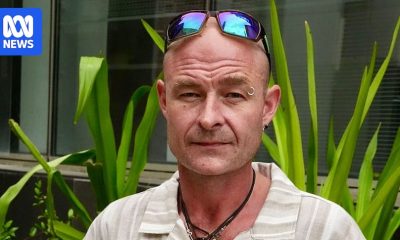Business
Five things to watch for in Bain Capital’s new Virgin Australia – Executive Traveller
From the seats to the eats, here’s a rundown of areas where Virgin loyalists are waiting for details to emerge.

Bain Capital is now behind the stick at Virgin Australia, and the US-based private equity firm is pressing ahead with its plans to reshape the challenger airline into a smaller, streamlined carrier.
Broadly speaking, Bain will generally embrace and accelerate the pre-pandemic plan of Virgin Australia CEO Paul Scurrah, which he’s often described as “turning a great airline into great business.”
And it’s the ‘business’ side of things where Bain will bring its expertise to bear, beginning with repositioning Virgin as a value-oriented ‘hybrid’ airline which will focus more on outright profitability than pie-chart market share.
For now, Virgin Australia remains in a holding pattern – still flying, but with a vastly reduced schedule and service offering, and all airport lounges closed.
It’s not known when Bain will pull back the curtains on its Virgin Australia 2.0 game plan, but should the airline’s 12,000-odd creditors – who between them are owned almost $7 billion – approve of the deal recommended by administrator Deloitte when they meet on August 22, then here’s what to watch for.
1. Business class
Bain’s Virgin 2.0 is expected to retain the business class seats of its Boeing 737s, although the international-grade Airbus A330 business class will vanish from the east-west routes as those leased jets are handed back to their owners.
The Executive Traveller take: Cutting the baseline costs of business class – a move that’s likely to see Luke Mangan cast aside – will give Virgin more latitude in selling those eight seats at a sharply competitive price against Qantas, as well as encouraging points-based upgrades from Velocity Frequent Flyers.
Bain’s local managing director Mike Murphy has made it clear that Virgin won’t chase the same well-heeled high flyers as Qantas.
“We are not looking to take Qantas head on, especially in their corporate part of the market,” Murphy has said, noting that Virgin’s previous battle for the high-end, suited-and-booted business travel brigade “wasn’t a happy outcome for anybody.”
Instead, expect to see the primo cabin targetted at small- to medium-sized businesses as well as the self-employed, all the while keeping its focus on the ‘value’ proposition.
2. Economy class
Bain’s emphasis on Virgin being a ‘value-based’ airline aimed at mainstream travellers means that economy class will become its battleground against both Qantas and Jetstar, while add-on ancillary fees will become an engine of profitability.
The Executive Traveller take: Bain will be bullish on the value proposition – the sweet spot of what travellers actually want and what they’re prepared to pay for that – and it could do worse than to ape Air New Zealand’s ‘Seats to Suit’ approach.
Expect Virgin Australia’s entry-level economy fares, which have long included one piece of checked luggage up to 23kg, to be stripped back to a carry-on bag: with a sustainable price-cut to match, this alone would appeal to many travellers, including some business flyers.
We’d also expect Economy X to remain in some form: the combination of extra legroom, priority boarding and reserved overhead bin space is a proven model of many airlines, especially the largest US carriers.
Review: Virgin Australia Boeing 737 Economy X
3. Meals
While its Luke Mangan-created business class menu was generally well received, Virgin copped plenty of flack for its economy class meals, which more often than not were scant snacks.
The Executive Traveller take: Don’t expect to see those Luke Mangan meals return – nobody flies any airline for the food alone, and Bain would sensibly be aiming at what really matters to business class travellers in order to identify and remove what’s not near the top of that list.
In fact, it’s not beyond the realm of possibility that economy class might see no meals or snacks offered on the key ‘golden triangle’ routes between Brisbane, Sydney and Melbourne.
Passengers, it could be argued, have plenty of opportunity to grab a bite in the lounge or at one of the airport cafes – and with a flight time of 90 minutes to two hours, when else in daily life can you not go for that long without food?
4. WiFi
Qantas and Virgin Australia launched inflight Internet within weeks of one another in April 2017.
Qantas declared its Qantas WiFi would be free, so Virgin followed suit until April 2018, when it began charging for a high-speed connection at upwards of $9 per flight while keeping free a ‘basic’ service suitable for social media, email and Web browsing.
The Executive Traveller take: Bain is likely to keep WiFi on the menu if it can slash the standing cost of simply having the service available and reserving sufficient bandwidth for each aircraft – these are costs the airline has to pay even if nobody on a flight is using WiFi.
But we’d not be surprised to see WiFi trimmed back to being at best a free service for messaging (including the likes of WeChat and WhatsApp), as is the practice with some US airlines, with a price tag on ‘full’ Internet access for email and the Web.
However, to encourage return patronage by frequent flyers, Bain could adopt a ‘monthly pass’ approach similar to that offered by its US-based technology provider Gogo, which allows WiFi across an unlimited number of flights (as a benchmark, GoGo’s subscription for Alaska Airlines, American Airlines and Delta Air Lines is US$50/month).
5. Lounges
Virgin Australia’s lounges have generally sat a notch above the Qantas Club but of course well below the Qantas Business Lounge, and their value to frequent flyers can’t be underestimated – even if the running costs appear on Bain’s spreadsheet in boldface red type.
The Executive Traveller take: Virgin’s invitation-only The Club lounges – those havens for the well-heeled and well-connected – are certainly for the chop, even if the VIP tier itself soldiers on in some form.
But larger questions over the lounge experience ‘for the rest of us’ remain, and are perhaps the greatest unknown in this set of puzzlers. How far can Bain cut the costs of operating these lounges, which don’t realise a red cent in revenue, or is investment the answer?
Could it shift away from what’s a generally underwhelming menu in favour of better-quality cafe meals with a modest price tag attached?
The shape of the Virgin 2.0 lounge experience, alongside the top Velocity Frequent Flyer tiers, will be very keenly watched in the coming months.
Also read: Here is what Bain Capital’s Virgin Australia 2.0 will look like

-

 Noosa News18 hours ago
Noosa News18 hours agoFearless tradie armed with hunting knife confronts teenage intruder at Mackay home
-

 Noosa News4 hours ago
Noosa News4 hours agoPossible severe storms predicted for Queensland’s south-east and Darling Downs
-

 Noosa News16 hours ago
Noosa News16 hours agoState school teachers rally outside Parliament
-

 General15 hours ago
General15 hours agoLabor backbencher Dave Kelly hopes WA government’s Dion Barber compensation appeal fails
